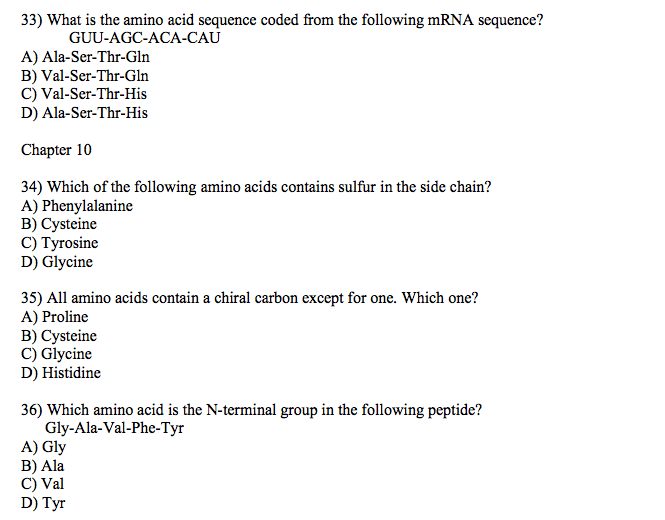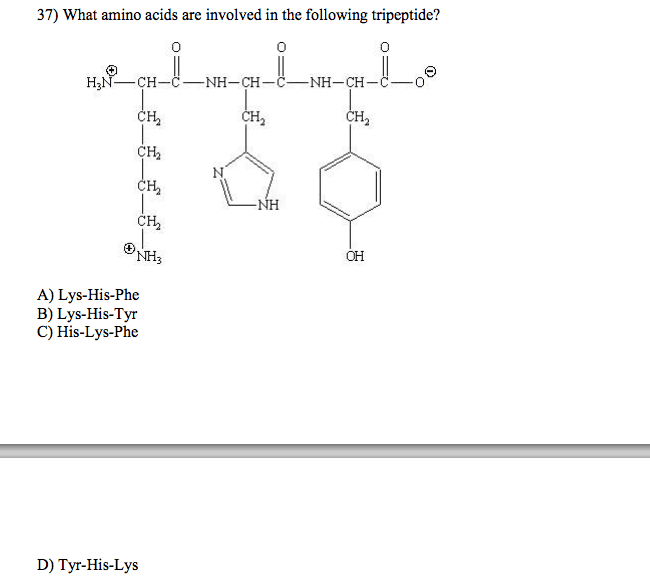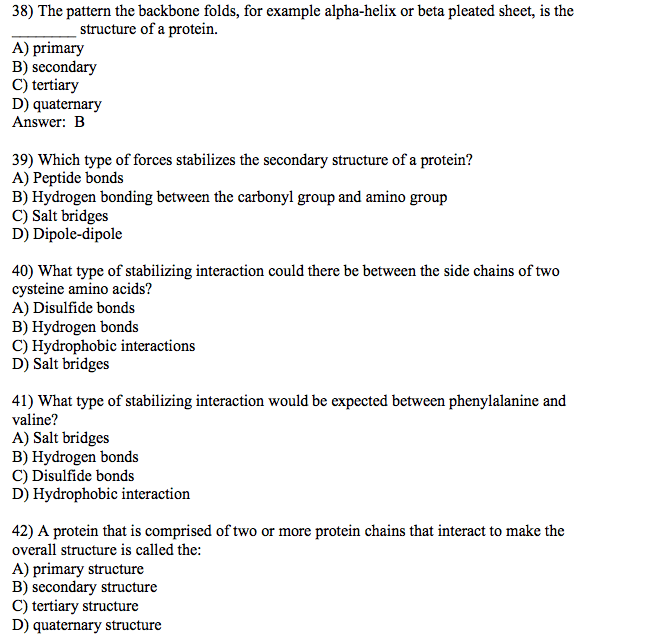BCHM 10000 Lecture Notes - Lecture 13: Hydrogen Bond, Alpha Helix, Random Coil

The Peptide Bond
●Amino acids can be linked together to form peptides and proteins
– a protein is a very long peptide
– a protein may contain 100 to 1000 amino acid residues
●Amino acids are linked together by peptide bonds
– indirectly involves removal of the elements of water
• Proteins have 4 levels of structure
– primary
• the linear sequence of amino acids in a protein
– secondary
• the local 3-dimensional structure of the peptide backbone
– tertiary
• the global arrangement of secondary structure, amino acid R groups and prosthetic groups
– quaternary
• the arrangement of multiple protein molecules in complexes
●A peptide bond is formed between the carboxyl group of the “first” amino acid and the
amino group of the “next”
– peptides have an “endedness”
– N-terminal (amino terminal) amino acid
– C-terminal (carboxy terminal) amino acid
●The atoms of the peptide bonds and the alpha-carbons form the peptide “backbone” of
proteins
●The primary structure of a protein is the unique, non-random, linear sequence of amino
acids in a protein and is critical to the protein’s structure and function
●primary structure dictates all other levels of structure
Document Summary
Amino acids can be linked together to form peptides and proteins. A protein is a very long peptide. A protein may contain 100 to 1000 amino acid residues. Amino acids are linked together by peptide bonds. Indirectly involves removal of the elements of water: proteins have 4 levels of structure. Primary: the linear sequence of amino acids in a protein. Secondary: the local 3-dimensional structure of the peptide backbone. Tertiary: the global arrangement of secondary structure, amino acid r groups and prosthetic groups. Quaternary: the arrangement of multiple protein molecules in complexes. A peptide bond is formed between the carboxyl group of the first amino acid and the amino group of the next . The atoms of the peptide bonds and the alpha-carbons form the peptide backbone of proteins. The primary structure of a protein is the unique, non-random, linear sequence of amino acids in a protein and is critical to the protein"s structure and function.






